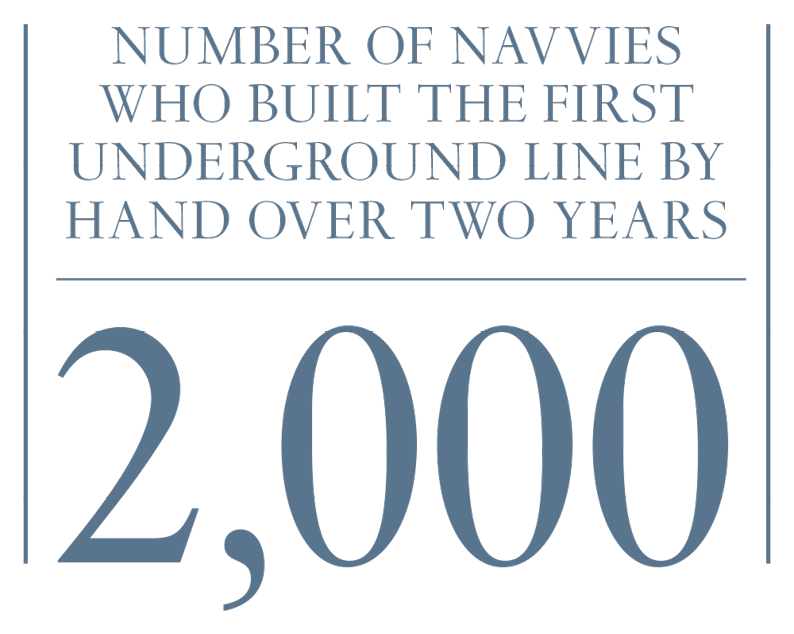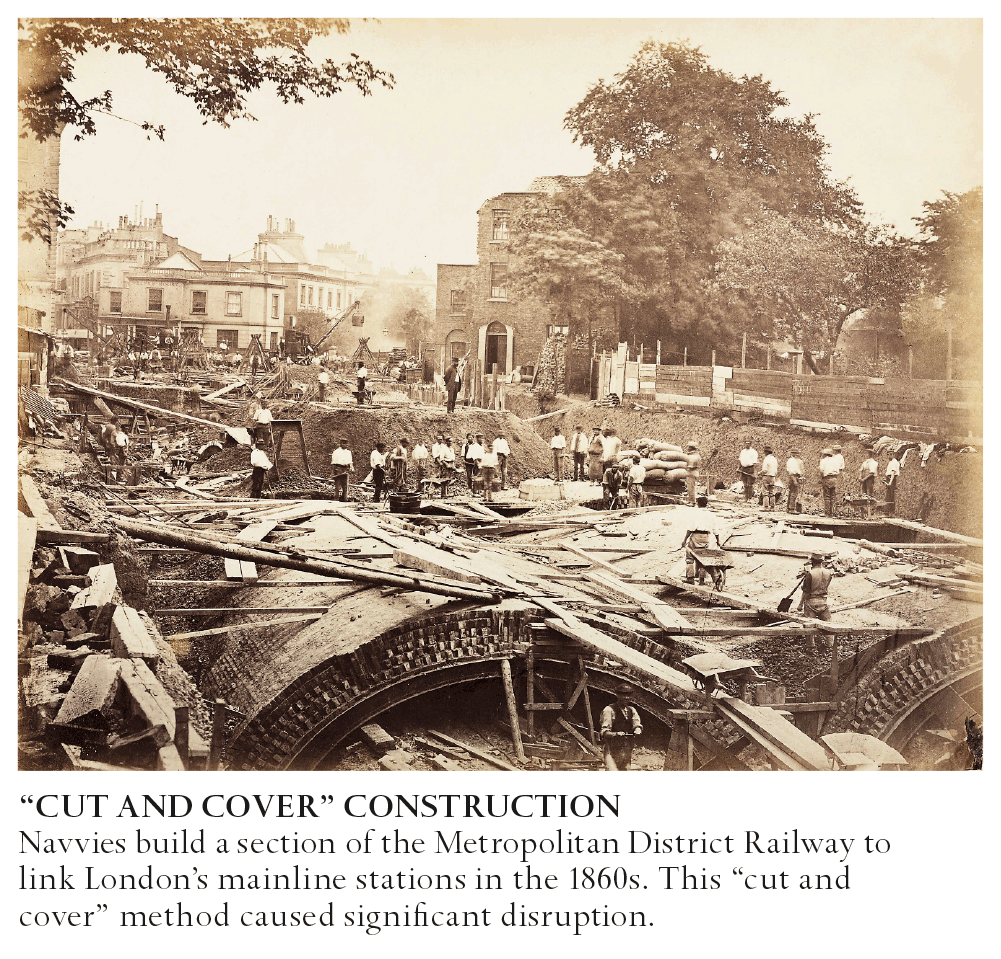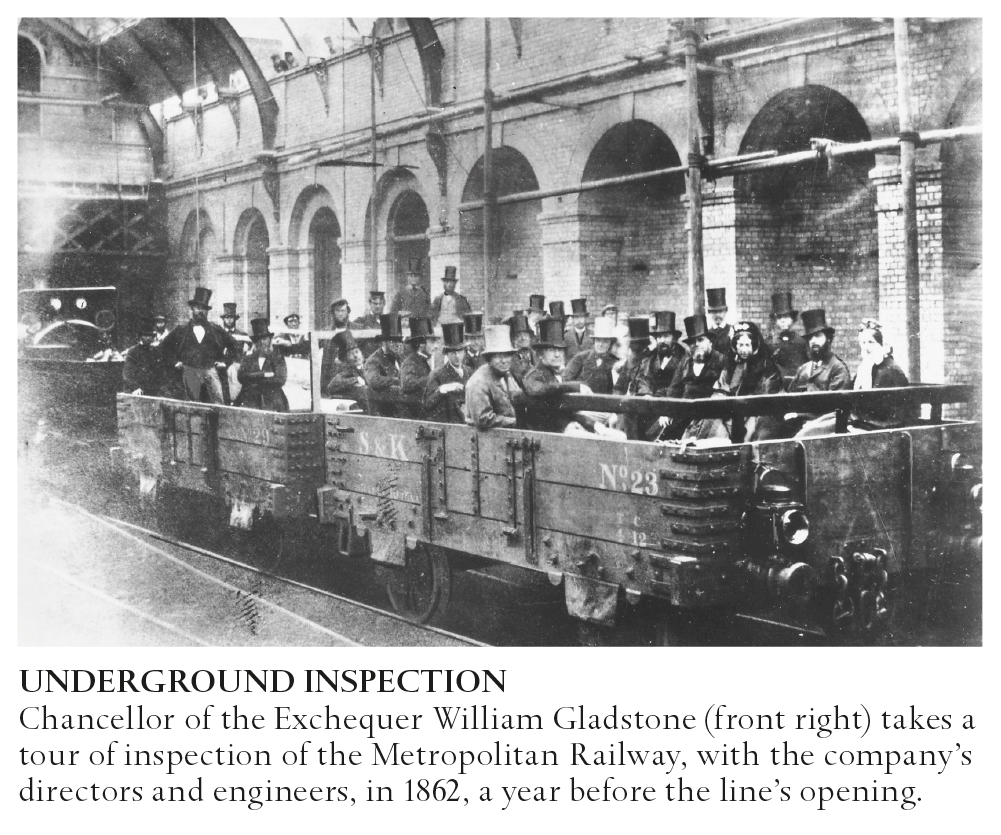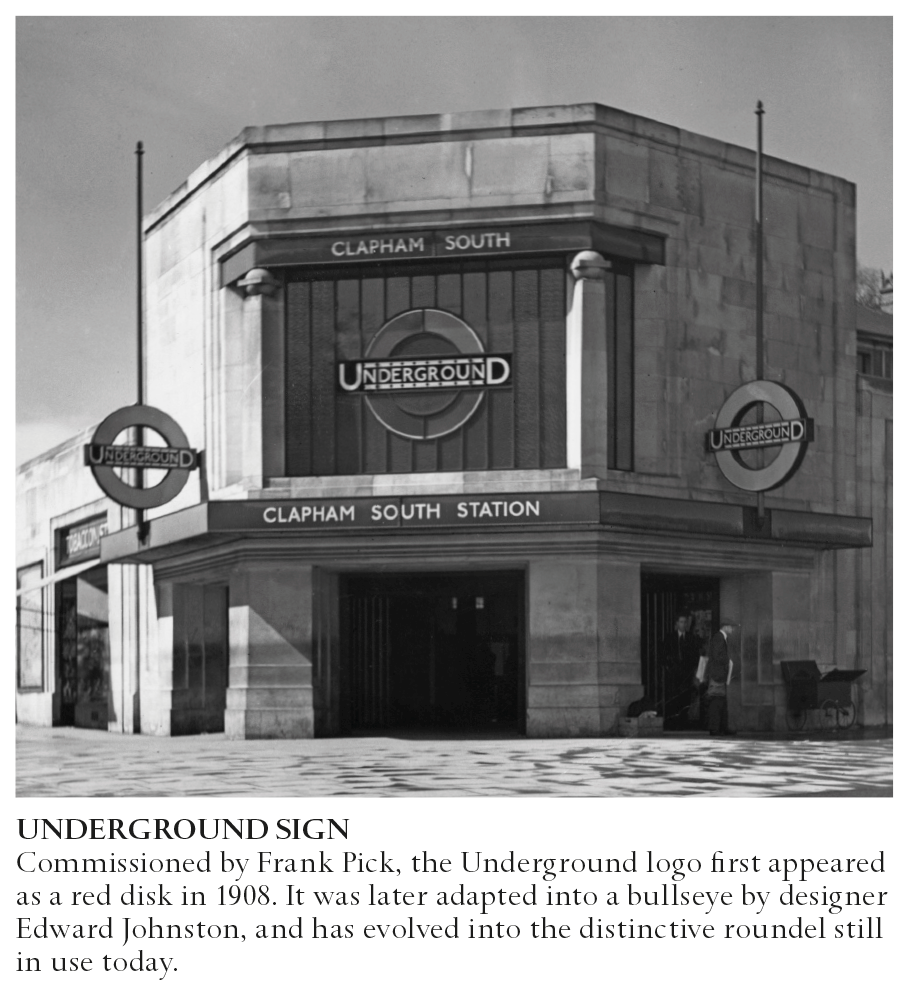Building a railroad underground was a radical idea, and it took a visionary man to dream up the plan. That man was Charles Pearson, solicitor to the City of London, who realized in the 1840s that something had to be done about the congestion and chaos of the city’s streets. The world’s first metropolis, London was booming thanks to the Industrial Revolution. In the first half of the 19th century, its population had grown from 1 million to 2.5 million. As it had grown, its traffic problems had become unmanageable, with pedestrians, hackney carriages, and horse-drawn buses all competing for space on the roads.
Pearson realized that central London was crowded with terrible slum housing, but people could not live far from the center as walking was the only way to get to work. The solution, he decided, was to build railroad lines that extended beyond the city boundary; the central section of the railroads, however, would have to be built beneath the city streets, so that houses would not have to be demolished. Pearson hoped these railroads would allow people to move out to far better conditions than existed in the inner city “slums,” with gardens and fresh air.
A serial campaigner, who fought for universal suffrage, civic rights for Jews, and penal reform, Pearson is best remembered for his ground-breaking achievement as pioneer of what became known as the Underground. He first set out his idea in 1845, in a pamphlet proposing a glass-roofed railroad down the Fleet valley between King’s Cross and Farringdon. Various inventors came up with similar ideas at the time. One plan was to drain the Regent’s Canal, which encircled central London, and convert it into a railroad. Another proposal was for an overhead railroad on arches, like those later constructed in New York and Chicago. A third, the most stylish, was for a “crystal railway” around London: a line either above or below street level, combined with a boulevard or walkway lined with shops and houses, and all covered by a glass arcade.
The 1840s were a period of intense railroad construction. A central station for the whole capital was proposed at Farringdon, on the edge of the City of London, but in 1846, a commission ruled this out because of the destruction it would cause in the City. Instead, the mainline stations were located on the edge of the central area. Ironically, this aggravated congestion as passengers pouring off the trains tried to get around the center of the city. Pearson’s vision of an underground railroad to link the stations was the obvious solution. He pushed through his plan, obtaining funds from the City of London as well as investment from existing railroad companies, and the plan received parliamentary approval in 1853. Unusually among railroad pioneers, Pearson did not seek any financial gain from the project.

The Metropolitan Railway Company was founded in 1854, but it was not until early in 1860 that work started on a line to link three of the mainline stations—Paddington, Euston, and King’s Cross—with the City, using a new method known as “cut and cover,” which involved digging a cutting, laying the railroad, and covering it with a tunnel. This technique was disruptive at ground level and meant that the railroad usually had to follow the line of existing streets. Interestingly, one house that had to be demolished on the route of the line, at 23 Leinster Gardens, was recreated as a façade in order not to ruin an elegant terrace, the open track behind the façade serving as a vent for the steam trains. It became a running joke among postboys to send novices to that address to deliver telegrams.

Although the building of such a line was unprecedented, there was only one major mishap, when the Fleet River burst its banks and flooded the works to a depth of 10ft (3m) in June 1862. Despite this, the 5-mile (7.5-km) line opened in January 1863, only a few months behind schedule, at a cost of £1 million (around £50 million/$81 million in today’s money). Sadly, Pearson had died the previous September and missed the sumptuous banquet held at Farringdon station to celebrate its opening.

There had been doubts as to whether people would venture onto this new type of railroad. Not only were the stations gas-lit and dark, but the trains were also hauled by steam engines that belched out smoke and steam, despite being equipped with special condensing equipment. The doubters, however, were proved wrong. Londoners had few concerns about trying out this new invention—the world’s first subterranean railroad—and 30,000 braved what The Times had warned would be “dark, noisome tunnels” to travel on it on the first day, January 10, 1863. The Metropolitan Railway, which gave its name to underground systems all around the world, was an instant success. It provided cheap laborers’ trains early in the morning, which proved hugely popular. After the workmen’s trains came thousands of office clerks who worked in the City of London and could afford the more expensive fares charged later in the morning. Throughout the day, the trains attracted all types of traveler in three different classes.
The Metropolitan Railway sought to ban smoking at first, on the grounds that the locomotives already created a stuffy atmosphere, but after a complaint in Parliament, the railroad was forced to allow smokers on the trains. Indeed, the air was sometimes so filled with smoke that chemists near the stations enjoyed a roaring trade in Metropolitan Mixture (strong smelling salts), sold as a panacea for passengers overcome by the fumes. In general, though, one of the reasons people were attracted to the system was that it was safe. No severe accidents occurred during its crucial early days, and indeed very few have happened throughout its history. Within a dozen years of the opening of the first line, no fewer than 70 million people were traveling annually on what had soon become known as the Underground.

Flushed with success, the Metropolitan Railway began to expand almost immediately. It built two extra tracks between King’s Cross and Farringdon, called the City Widened Lines, which were then extended farther into the City. Other promoters were keen to get involved, and one was chosen to share the expansion of the network. This was the Metropolitan District Railway (later the District line), run by James Staats Forbes, a rival of the Metropolitan’s chairman, Edward Watkin. The two were already in competition when they set out their respective plans to expand the Underground: Forbes ran the London, Chatham, and Dover Railway, while Watkin was a director of its competitor in Kent, the South Eastern Railway.
For the next 30 years, the rival railroads expanded the Underground system rapidly into north and west London. They had rather different conceptions, which is why the Metropolitan line extends far beyond central London into the Metroland developed in the 1920s and 1930s, while the District line only extends as far as the more central Wimbledon, Richmond, and Ealing. Nevertheless, thanks to the dynamism of this duo, the Underground network soon spread well beyond the existing city boundaries, and, wherever the lines were built, new housing soon sprang up.
Despite their achievements, the Metropolitan and District railroads never reconciled their differences and remained in dispute over who should complete the Circle Line, which links nearly all of London’s mainline terminals, until its completion in 1884. The two companies ended up running the line jointly, but remained in competition: the Metropolitan ran the clockwise trains and the District the counterclockwise ones. Hapless visitors to London had to choose between the two companies’ ticket offices and could end up going the long way round the Circle if they unwittingly bought the wrong ticket.
In 1890, the first deep “tube” line, bored out of the London clay rather than being built by the cut and cover method, was completed. The City and South London Railway ran under the River Thames between Stockwell and the City. As there was inadequate ventilation in the tunnels deep underground, the trains were powered by electricity rather than steam. The line was dubbed the “tuppenny tube” as two pence was the fare for all journeys, and it too was an instant success—despite the fact that the trains operating the service had tiny windows and were universally known as sardine boxes. Other Tube railroads soon followed. Both the Waterloo and City Line and the Central Line, the most successful of the early lines, had opened by 1900.
A series of pioneering promoters continued to develop the Underground. The next was Charles Yerkes, an American with a prison record who had once run Chicago’s tramways, and turned out to be a transportation visionary. He brought together several lines, both existing and proposed, under the auspices of the Underground Electric Railways Ltd. (UERL); electrified the Metropolitan, District, and Circle lines; and, remarkably, built three deep Tube lines in the space of five years—the Piccadilly and Bakerloo lines, and the Hampstead section of the Northern line. By 1907, all the Tube lines through central London, except the Victoria Line (opened in 1968 and completed in 1972) and Jubilee Line (opened in 1979 and extended in 1999), had been built.
After Yerkes, progress was more in marketing than engineering. Frank Pick, who started working for the network in 1906 and ran it until 1940 alongside chairman Albert Stanley (later Lord Ashfield), created the public image of the Underground. Pick and Stanley were a successful partnership: Pick was an assiduous obsessive, while Stanley was more strategic. Their creation lives on today, a public organization whose achievements have been recognized around the world.
Pick instigated the design of both the famous red, blue, and white roundel that became the instantly recognizable Underground sign, and the innovative and much-imitated map devised by Harry Beck. An electrician employed by the company, Beck created the map, based on electrical diagrams, in his spare time. Pick also commissioned the Johnston Sans typeface for the organization, advertising posters by artists both known and unknown, and cutting-edge architectural designs for new stations. For his part, Stanley persuaded the government to pay for suburban extensions of the system. Together, the pair built up the UERL into a vast organization encompassing almost all the Underground lines and London’s buses, and ran the nationalized London Transport from its creation in 1933 until World War II, a period widely regarded as its heyday.

Although the system was neglected after the war and usage fell dramatically, it has revived since the 1970s and flourishes today. Built by people with vision, the London Underground is more than just a transportation system; it is the mechanism that made it possible for London to grow in the way it did. The Underground allowed people to live farther out, as Pearson wanted, but also enabled the center of the city to remain compact and accessible. Today, the underground attracts record numbers of passengers. The network will soon benefit from the addition of Crossrail, running under London in an east–west direction and linking up with all the Underground lines, which will greatly relieve pressure on the system.
Uniquely, the London Underground has become the emblem of the city it serves. Thanks to Pearson and subsequent developers, London became the first city with a railroad beneath its streets, and Britain was once again a pioneer. It was not until the end of the 19th century that other cities started building railroads underground. Budapest, in Hungary, was the second city in the world to develop a metro system, which opened in 1896, more than 30 years after London’s. Major cities such as Paris, New York, and Berlin followed in the early years of the 20th century. Now, most major cities boast an underground railroad system and there are nearly 200 metro and subway networks around the world, from Yerevan in Armenia to Los Teques in Venezuela.